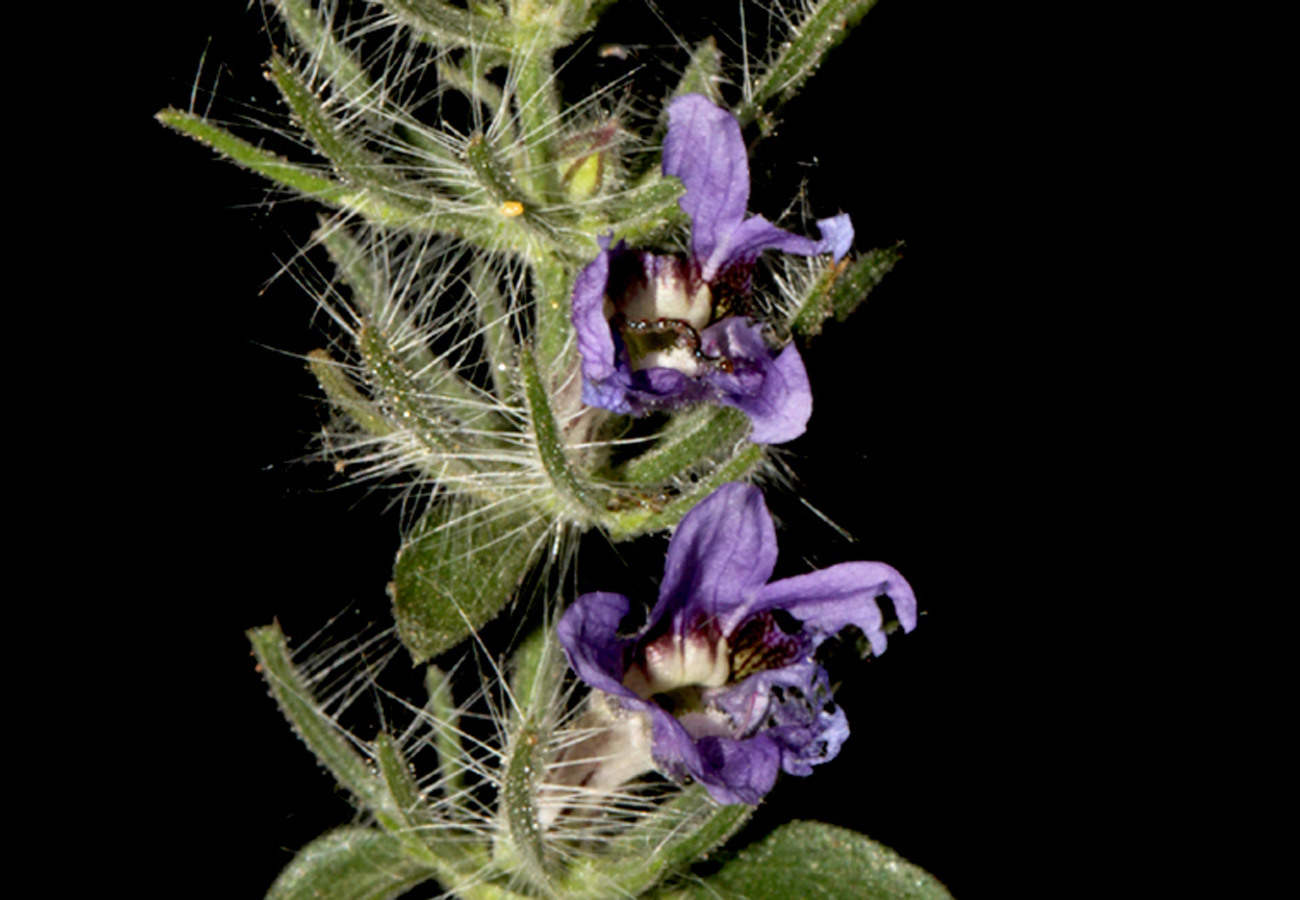Abstract
The endemic Indian genus Haplanthodes (Acanthaceae) is revised. Four species, viz. H. neilgherryensis, H. plumosa, H. tentaculata and H. verticillata and a new variety, H. neilgherryensis var. toranganensis are recognized. Lectotype is designated for Haplanthodes, Haplanthus plumosus and H. verticillaris. The nomenclature of the Linnaean name Ruellia tentaculata is also discussed. Micromorphology of seed using light microscope (LM) and scanning electron microscope (SEM) is observed for the first time, and two types, reticulate and micro papillate, have been recognized based on surface sculpturing pattern. The genus differs from the related genera Andrographis and Haplanthus by distinctly two grooved seeds with hygroscopic hairs. Pollen grains of the genus are oblate or prolate spheroidal, distinctly triangular, trizonocolporate with reticulate exine ornamentation.
References
<p>Barthlott, W. (1981) Epidermal seed surface characters of plants: Systematic applicability and some evolutionary aspects. <em>Nordic Journal of Botany</em> 1: 345–355. https://doi.org/10.1111/j.1756-1051.1981.tb00704.x</p>
<p>Bentham, G. & Hooker, J.D. (1876) <em>Genera Plantarum </em>2. Reeve & Co., London, pp. 533–1226.</p>
<p>Clarke, C.B. (1885) Acanthaceae. <em>In: </em>Hooker, J.D. (ed.) <em>The Flora of British India </em>4. L.Reeve & Co., London, pp. 387–558.</p>
<p>Cooke, T. (1908) <em>The Flora of the Presidency of Bombay.</em> Taylor & Francis, London, 375 pp.</p>
<p>Erdtman, G. (1960) The Acetolysis Method - a revised description. <em>Svensk Botanisk Tidskrift</em> 54: 561–564.</p>
<p>Forman, L.L. (1989) The illustrations to William Hunter’s ‘Plants of Wales Island’. <em>Kew Bulletin </em>44 (1): 151–161. https://doi.org/10.2307/4114655</p>
<p>Gnanasekaran, G., Murthy, G.V.S. & Deng, Y.F. (2016) Resurrection of the genus <em>Haplanthus</em> (Acanthaceae: Andrographinae). <em>Blumea</em> 61: 165–169. https://doi.org/10.3767/000651916X693185</p>
<p>Hijmans, R.J., Guarino, L., Cruz, M. & Rojas, E. (2001) Computer tools for spatial analysis of plant genetic resources data: 1. DIVA-GIS. <em>Plant Genetics Resources Newsletter</em> 127: 15–19.</p>
<p>Imlay, J.B. (1939) Contribution to the Flora of Siam. <em>Bulletin of Miscellaneous Information. Royal Botanic Gardens, Kew </em>3: 109–150.<em> </em>https://doi.org/10.2307/4111677</p>
<p>Kuntze, O. (1903) <em>Lexicon generum phanarogamarum. </em>Deutsche verlags-anstalt, Stuttgart, pp. 1–709.</p>
<p>Jarvis, C. (2007) <em>Order out of Chaos: Linnaean plant names and their types.</em> The Linnaean Society of London in Association with the Natural History Museum, London, pp. 247–936.</p>
<p>Linnaeus, C. (1756) <em>Centuria II Plantarum.</em> L.M. Hojer, Uppsala, pp. 1–34.</p>
<p>Majumdar, R.B. (1971) Notes on Rajasthan flora III. <em>Bulletin of the Botanical Society of Bengal</em> 25: 75–76.</p>
<p>McDade, L.A., Daniel, T.F. & Kiel, C. A. (2008) Toward a comprehensive understanding of phylogenetic relationships among lineages of Acanthaceae s.l. (Lamiales). <em>American Journal of Botany</em> 95: 1136–1152. https://doi.org/10.3732/ajb.0800096</p>
<p>Nees, (1832) Acanthaceae Indiae Orientalis. <em>In:</em> Wallich, N. (Ed.) <em>Plantae Asiaticae rariores, or, Descriptions and figures of a select number of unpublished East Indian plants </em>3<em>.</em>Treuttel et Wurtz, London, pp. 77–117.</p>
<p>Nees, (1847) Acanthaceae. <em>In: </em>Candolle, A.P. de. (Ed.) <em>Prodromus Systematis Naturalis Regni Vegetabilis </em>11<em>.</em> Treuttel et Wurtz, Paris, pp. 46–519.</p>
<p>Panigrahi, G. & Das, G.C. (1981) A revision of <em>Haplanthodes</em> O. Kuntze (Acanthaceae). <em>Bulletin of the Botanical Survey of India</em> 23: 197–203.</p>
<p>Punt, W., Blackmore, S., Nilsson, S. & Thomas, A. (1994) <em>Glossary of pollen and spore terminology. </em>Utrecht, LPP Foundation, pp. 7–71.</p>
<p>Roth, A.W. (1821) <em>Novae Plantarum Species praesertim Indiae Orientalis. </em>Halberstadii: Sumptibus H. Vogleri, pp. 1–400.</p>
<p>Roxburgh, W. (1820) <em>Flora Indica; or descriptions of Indian Plants 1</em>. Thacker & Co., Serampore, pp. 1–720.</p>
<p>Scotland, R.W. (1992) Pollen morphology of Andrographideae (Acanthaceae). <em>Review of Palaeobotany and Palynology</em> 72: 229–243. https://doi.org/10.1016/0034-6667(92)90028-F</p>
<p>Singh, N.P., Lakshminarasimhan, P., Karthikeyan, S., & Prasanna, P.V. (2001) <em>Flora of Maharashtra State 2. Docotyledons.</em> Botanical Survey of India, Calcutta, pp. 589–684.</p>
<p>Surveswaran, S., Tiwari, N., Karanth, P.K., Deshmukh, P.V. & Lekhak, M.M. (November 9, 2020.) Molecular phylogenetics and character evolution in <em>Haplanthodes</em> (Acanthaceae), an endemic genus from peninsular India. <em>bioRxiv</em>. https://doi.org/10.1101/2020.11.08.373605</p>
<p>Thiers, B. (2020) <em>Index Herbariorum:</em> <em>a global directory of public herbaria and associated staff.</em> New York Botanical Garden’s Virtual Herbarium. [http://sweetgum.nybg.org/science/ih/]</p>
<p>Turland, N.J., Wiersema, J.H., Barrie, F.R., Greuter, W., Hawksworth, D.L., Herendeen, P.S., Knapp, S., Kusber, W.-H., Li, D.-Z., Marhold, K., May, T.W., McNeill, J., Monro, A.M., Prado, J., Price, M.J. & Smith, G.F. (2018) <em>International Code of Nomenclature for algae, fungi, and plants (Shenzhen Code) adopted by the Nineteenth International Botanical Congress Shenzhen, China, July 2017</em>. [Regnum Vegetabile 159]. Koeltz Botanical Books, Glashütten. https://doi.org/10.12705/Code.2018</p>
<p>Turner, I.M. (2021) Heyne, Roth, Roemer and Schultes, and the plant names published in Novae plantarum species praesertim Indiae orientalis. <em>Taxon </em>70 (2): 365–428. https://doi.org/10.1002/tax.12449</p>
<p>Wight, R. (1850) <em>Icones plantarum Indiae Orientalis:or figures of Indian plants</em>. 4<em>.</em> J.B. Pharoah, Madras, pp. 1–1621.</p>
<p>Wood, J.R.I. (2014) New names and combinations in Indian Acanthaceae. <em>Novon: A Journal of Botanical Nomenclature</em> 23 (3): 385–395. https://doi.org/10.3417/2013046</p>


